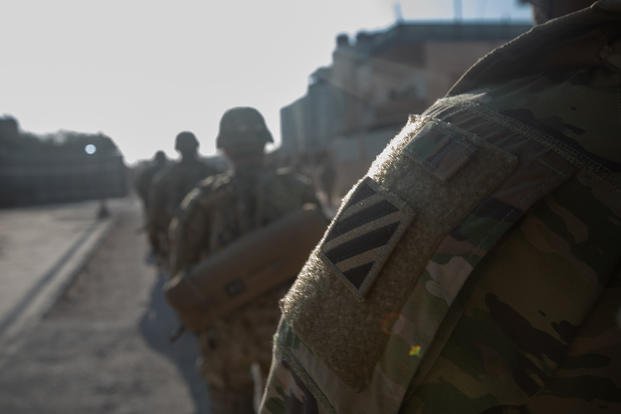In a surprise announcement, the Pentagon revealed that it has not been offering an accurate count of how many U.S. troops it has had in Syria, with the actual figure more than double the official count.
“I learned today that, in fact, there are approximately 2,000 U.S. troops in Syria,” Pentagon spokesman Maj. Gen. Pat Ryder told reporters, before adding that “these additional forces are considered temporary rotational forces that deploy to meet shifting mission deployments.”
The newly revealed troop numbers come after the U.S. military has waged dozens of airstrikes in Syria in recent days as part of a major uptick in the yearslong operations against the Islamic State terrorist group following the collapse of President Bashar Assad’s regime. A round of strikes on Monday killed 12 militants and an earlier round of 75 strikes on Dec. 8 was conducted by B-52 Stratofortress bombers, F-15E Strike Eagle and A-10 Thunderbolt II aircraft.
Read Next: Troop Pay Could Be Delayed Under Elon Musk-Inspired Government Shutdown
Pentagon officials have told reporters for months — including as recently as the last two weeks — that there were only around 900 troops in Syria. Ryder said that figure actually applied to service members “on longer-term deployments.”
The discrepancy between what Defense Department officials have told reporters and what at least some officials have known to be the reality on the ground has been going on for “months,” according to the Pentagon’s top spokesman.
“I don’t have a specific date to provide … but my understanding is it’s been for a while, so clearly, before the fall of the Assad regime,” Ryder said.
Troops in Syria — largely made up of regular and Special Forces Army soldiers — are in the country to fight the Islamic State and have been the subject of varying levels of scrutiny and interest over the years. However, since the fall of Assad’s regime two weeks ago, there has been a rise in questions about how much danger U.S. forces face in the increasingly unstable country.
Since the collapse of the Assad regime, both Turkey and Israel have also undertaken military operations and strikes inside Syria, and the Pentagon confirmed that at least one of its MQ-9 Reaper drones had been downed in the country.
Ryder hinted at the possibility that diplomatic considerations in the region were partly to blame for why the Pentagon did not provide accurate totals for months but, when pressed for more details, he said that he wasn’t “going to go into any diplomatic discussions.”
Ryder did say that Defense Secretary Lloyd Austin was aware of the accurate totals, but it appears that information was not shared with the spokesman or the team of military and civilian officials who regularly engage with the press.
“I got word of it recently as our team was looking at this … given the significant situation in Syria,” Ryder explained, referring to the higher troop counts.
“I asked for more information on this, recognizing that if the numbers are not what we brief, let’s find out what the actual numbers are and go from there,” he said, before adding that he “got the numbers today.”
This is not the first time that U.S. officials have offered inaccurate or misleading totals of troops in Syria.
During his first administration, President Donald Trump — whose political rhetoric featured a strong desire to bring home most service members deployed abroad — issued a surprise order in 2019 to have American troops in Syria step aside and allow Turkey to conduct military operations against U.S.-backed Kurdish forces in the region.
Days later, he declared that “we have no soldiers in Syria” — a claim that CNN reported was incorrect and the U.S. actually had around 1,000 troops in the country.
Since the fall of the Assad regime, U.S. forces in the Middle East have conducted several airstrikes against the Islamic State, including one that hit more than 75 targets, as a way to ensure that the Islamic terror group doesn’t seize on the instability in Syria to return to power.
Officials said that the strikes were enabled by the fact that the Russian forces that have been controlling airspace over portions of Syria have withdrawn.
Related: ‘We Saw the Opportunity’: Pentagon Says Syria Strikes Were Possible After Assad and Russia Left
Story Continues
Read the full article here

